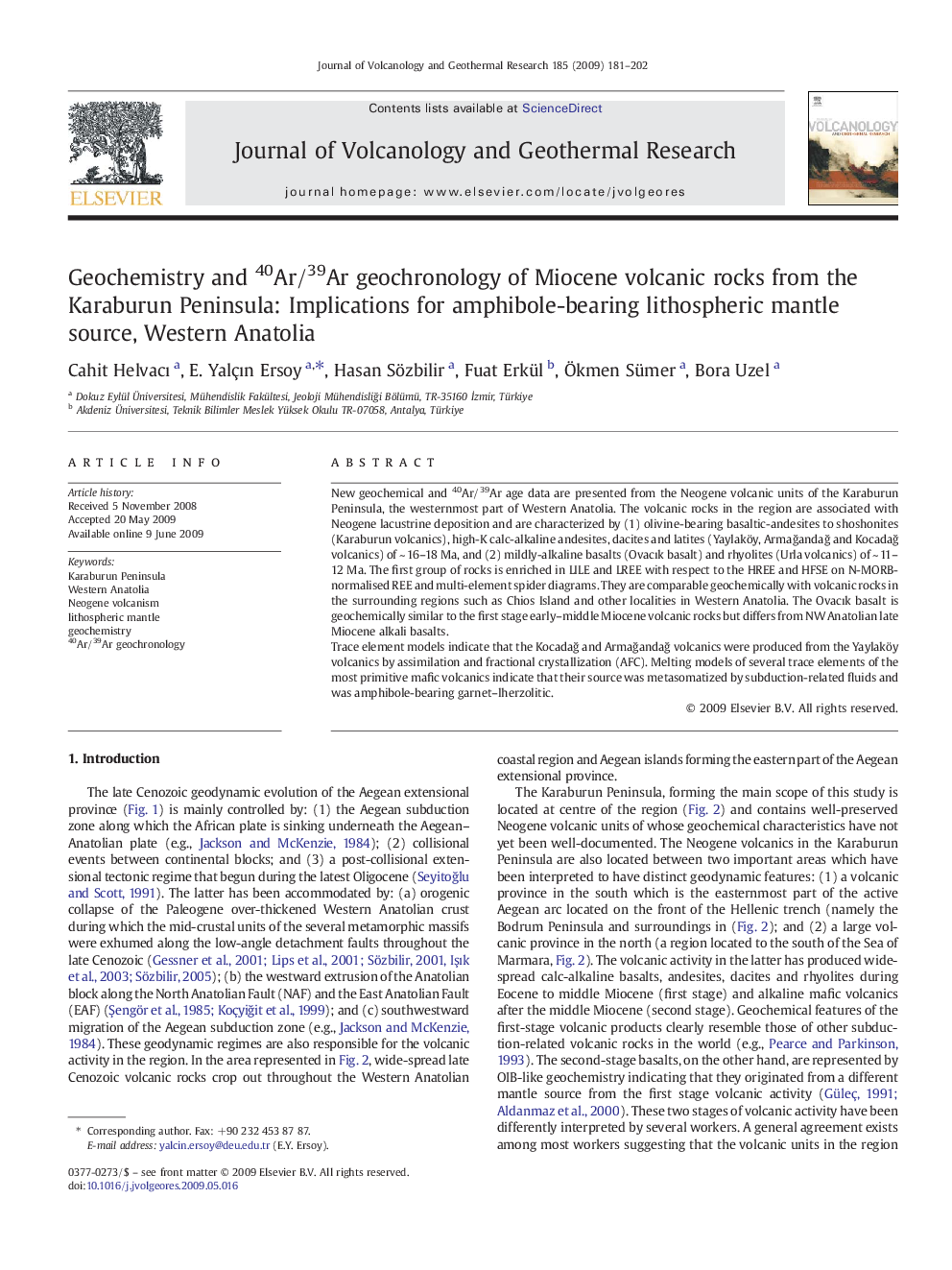| Article ID | Journal | Published Year | Pages | File Type |
|---|---|---|---|---|
| 4714226 | Journal of Volcanology and Geothermal Research | 2009 | 22 Pages |
New geochemical and 40Ar/39Ar age data are presented from the Neogene volcanic units of the Karaburun Peninsula, the westernmost part of Western Anatolia. The volcanic rocks in the region are associated with Neogene lacustrine deposition and are characterized by (1) olivine-bearing basaltic-andesites to shoshonites (Karaburun volcanics), high-K calc-alkaline andesites, dacites and latites (Yaylaköy, Armağandağ and Kocadağ volcanics) of ~ 16–18 Ma, and (2) mildly-alkaline basalts (Ovacık basalt) and rhyolites (Urla volcanics) of ~ 11–12 Ma. The first group of rocks is enriched in LILE and LREE with respect to the HREE and HFSE on N-MORB-normalised REE and multi-element spider diagrams. They are comparable geochemically with volcanic rocks in the surrounding regions such as Chios Island and other localities in Western Anatolia. The Ovacık basalt is geochemically similar to the first stage early–middle Miocene volcanic rocks but differs from NW Anatolian late Miocene alkali basalts.Trace element models indicate that the Kocadağ and Armağandağ volcanics were produced from the Yaylaköy volcanics by assimilation and fractional crystallization (AFC). Melting models of several trace elements of the most primitive mafic volcanics indicate that their source was metasomatized by subduction-related fluids and was amphibole-bearing garnet–lherzolitic.
